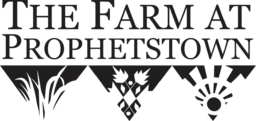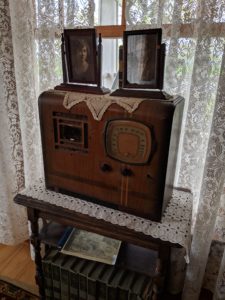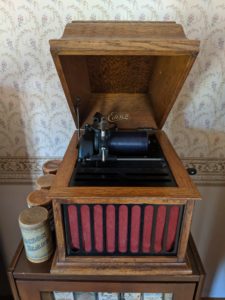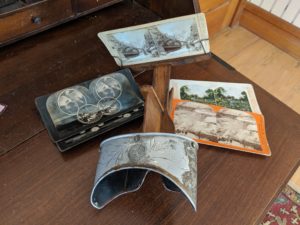Entertainment
Radio
The 1920s was a huge time for radio. At this time, several radio shows and stations were coming to the airwaves which brought new genres of entertainment for families. Many of these stations were aired from Chicago. The types of radio shows would later be the televisions genres we watch today. They included radio plays, soap operas, children shows, news and other genres. It was also at this time when advertising started on the radio. Soap operas were called soaps because during these dramas, commercials for soaps and detergents were often aired.
Amos ‘n’ Andy was a popular show. It was a radio sitcom that followed Amos and Andy and their lives in Harlem’s historic black community. Another popular radio show was a thriller and suspense drama called Mystery House which aired in 1929. America’s first country station, National Barn Dance, aired in 1924. Sports play-by-play stations were also popular to tune into so families could hear about their favorite teams. National Radio Home-Makers Club was a popular radio station for housewives as it gave nutritional information and advice on menus and beauty.
Take a listen to the chilling radio show Mystery House!
Phonographs
Besides the radio, phonographs were also used to listen to music. Two of these instruments can be found in the library. The Victrola is a stand up record player. It is called a Victrola because it was of the Victor brand. Another, more compact version of a record player was also common. It was called the Edison Phonograph. Instead of being a stand up model, this model was small enough to sit on a table top. Most phonographs took the large, flat, records. The Edison Phonograph takes cylinders instead. The songs were engraved on the cylinders similarly to records but were made much more compact.
Player Piano
Also located in the library is the player piano. Player pianos were common because even if you couldn’t read music, you could play this one. This player piano is an “Easy to Play” Gulbransen Registering Piano from 1927. A user would press the pedals at the base of the piano. By pressing the pedals, vacuum pressure would be created in the inner workings of the piano. The paper rolls had holes for each tone for the music. When the holes in the paper roll pass over the metal bar that also has holes, air is sucked inside. This air opens a valve that activates a hammer that hits the string creating the tone. The paper rolls often had lyrics to the song printed on the roll. Families could gather around the piano and sing along to the songs that were being played.
Stereoscope
Located on the writing desk in the living room a stereoscope can be found. Stereoscopes are made with two lenses and use cards with two separate images. Each image is slightly different to recreate what each of your eyes may see. When you look at the card through the stereoscope, you should be able to see a 3 dimensional image. Many photographers were able to make their own stereoscope cards so you might find images representing a family or a couple on their wedding day. Other images were places that people would travel to so collecting images from a National Park or Niagara Falls were common keepsakes or images of places people wanted to visit.
Click here to learn more about the toys and games children enjoyed!





